#1960s to 2016 active.
Text
Beautiful Movies All Girls Should Watch

A list of movies that touch on coming of age, romance and complex female emotions.
May (2002): A socially awkward veterinary assistant with a lazy eye and obsession with perfection descends into depravity after developing a crush on a boy with perfect hands.
Audition (1999): A widower takes an offer to screen girls at a special audition, arranged for him by a friend to find him a new wife. The one he fancies is not who she appears to be after all.
Helter Skelter (2012): Top star Lilico undergoes multiple cosmetic surgeries to her entire body. As her surgeries show side effect, Lilico makes the lives of those around her miserable as she tries to deal with her career and her personal problems.
Ginger Snaps (2000): Two death-obsessed sisters, outcasts in their suburban neighborhood, must deal with the tragic consequences when one of them is bitten by a deadly werewolf.
The Craft (1996): A newcomer to a Catholic prep high school falls in with a trio of outcast teenage girls who practice witchcraft, and they all soon conjure up various spells and curses against those who anger them.
Malèna (2000): Amidst the war climate, a teenage boy discovering himself becomes love-stricken by Malèna, a sensual woman living in a small, narrow-minded Italian town.
Perfect Blue (1997): A retired pop singer turned actress’ sense of reality is shaken when she is stalked by an obsessed fan and seemingly a ghost of her past.
Rosemary’s Baby (1968): A young couple trying for a baby moves into an aging, ornate apartment building on Central Park West, where they find themselves surrounded by peculiar neighbors.
The Virgin Suicides (1999): A group of male friends become obsessed with five mysterious sisters who are sheltered by their strict, religious parents in suburban Detroit in the mid 1970s.
Sucker Punch (2011): A young girl institutionalized by her abusive stepfather retreats to an alternative reality as a coping strategy and envisions a plan to help her escape.
Piggy (2022): An overweight teen is bullied by a clique of cool girls poolside while holidaying in her village. The long walk home will change the rest of her life.
The Love Witch (2016): A modern-day witch uses spells and magic to get men to fall in love with her, with deadly consequences.
Pearl (2022): In 1918, a young woman on the brink of madness pursues stardom in a desperate attempt to escape the drudgery, isolation and lovelessness of life on her parents' farm.
Girl, Interrupted (1999): Based on writer Susanna Kaysen's account of her 18-month stay at a mental hospital in the late 1960s.
Black Swan (2010): Nina is a talented but unstable ballerina on the verge of stardom. Pushed to the breaking point by her artistic director and a seductive rival, Nina's grip on reality slips, plunging her into a waking nightmare.
Gone Girl (2014): With his wife's disappearance having become the focus of an intense media circus, a man sees the spotlight turned on him when it's suspected that he may not be innocent.
Jennifer’s Body (2009): A newly-possessed high-school cheerleader turns into a succubus who specializes in killing her male classmates. Can her best friend put an end to the horror?
Bones And All (2022): Coming of age romance about two cannibals
In the Mood for Love (2000): Two neighbors form a strong bond after both suspect extramarital activities of their spouses. However, they agree to keep their bond platonic so as not to commit similar wrongs.
Brokeback Mountain (2005): Ennis and Jack are two shepherds who develop a sexual and emotional relationship. Their relationship becomes complicated when both of them get married to their respective girlfriends.
Call Me By Your Name (2017): In 1980s Italy, romance blossoms between a seventeen-year-old student and the older man hired as his father's research assistant.
Maurice (1986): Two English school chums find themselves falling in love at Cambridge. To regain his place in society, Clive gives up Maurice and marries. While staying with Clive and his wife, Maurice discovers romance in the arms of the gamekeeper Alec.
Y Tu Mamá También (2001): In Mexico, two teenage boys and an attractive older woman embark on a road trip and learn a thing or two about life, friendship, sex, and each other.
Caroline (2009): An adventurous 11-year-old girl finds another world that is a strangely idealized version of her frustrating home, but it has sinister secrets.
Corpse Bride (2005): When a shy groom practices his wedding vows in the inadvertent presence of a deceased young woman, she rises from the grave assuming he has married her.
#girl interrupted#female hysteria#femcel#female rage#girl blogger#girl blogging#gone girl#girl interupted syndrome#manic pixie dream girl#female manipulator#gaslight gatekeep girlboss#coquette#doelette#nyphette#dollette#girlhood#hyper feminine#waifspo#divine feminine#gay movies
2K notes
·
View notes
Text
Stats from Movies 1-100
Top 10 Movies - Highest Number of Votes
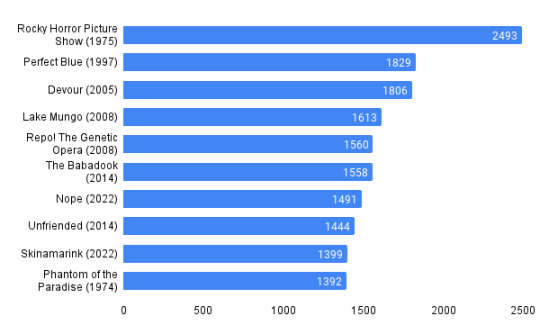
Rocky Horror Picture Show (1975) had the most votes with 2,493 votes.
The 10 Most Watched Films by Percentage

Coraline (2009) was the most watched film with 89.41% of voters saying they had seen it.
The 10 Least Watched Films by Percentage
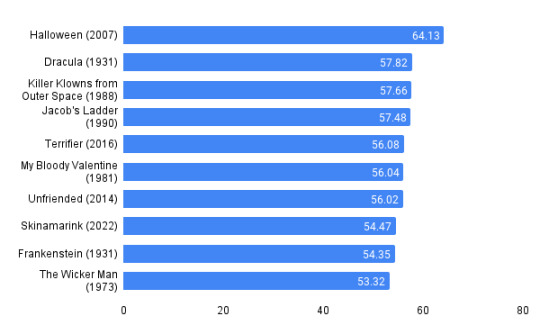
Halloween (2007) was the least watched film with 64.13% of voters saying they hadn't seen it.
The 10 Most Known Films by Percentage

Coraline (2009) was the best known film with only 0.08% of voters saying they'd never heard of it.
The 10 Least Known Films by Percentage
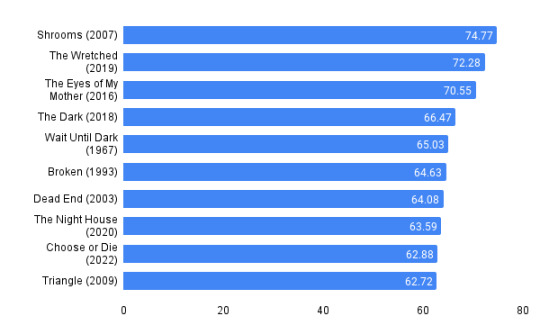
Shrooms (2007) was the least known film with 74.77% of voters saying they'd never heard of it.
The movies part of the statistic count and their polls below the cut.
Carrie (1976)
Scream (1996)
Hereditary (2018)
It (2017)
Candyman (1992)
Killer Klowns from Outer Space (1988)
The Texas Chain Saw Massacre (1974)
The Babadook (2014)
Paranormal Activity (2007)
An American Werewolf in London (1981)
Misery (1990)
The Fly (1986)
Black Swan (2010)
House of 1000 Corpses (2003)
The Devil’s Rejects (2005)
3 from Hell (2019)
Repo! The Genetic Opera (2008)
Halloween (1978)
Halloween (2007)
Re-Animator (1985)
My Bloody Valentine (1981)
Tucker and Dale vs Evil (2010)
Little Shop of Horrors (1986)
Scary Movie (2000)
Birdemic: Shock and Terror (2010)
Psycho (1960)
Train to Busan (2016)
Thelma (2017)
The Dark (2018)
Ravenous (1999)
Shrooms (2007)
Let the Right One In (2008)
It Follows (2014)
Martyrs (2008)
The Wicker Man (1973)
The Descent (2005)
Dead End (2003)
Fear Street trilogy (2021)
The Ring (2002)
Bride of Re-Animator (1990)
Frankenstein (1931)
Broken (1993)
NoroI: The Curse (2005)
The Eyes of My Mother (2016)
Jacob's Ladder (1990)
Phenomena (1985)
Ichi the Killer (2001)
Nightbreed (1990)
Braindead (1992)
Hatching (2022)
Wait Until Dark (1967)
The Host (2006)
Oculus (2013)
Skinamarink (2022)
We're All Going to the World's Fair (2021)
Perfect Blue (1997)
The Night House (2020)
Lake Mungo (2008)
Rocky Horror Picture Show (1975)
Phantom of the Paradise (1974)
The Cabin in the Woods (2011)
Devour (2005)
My Bloody Valentine 3D (2009)
Unfriended (2014)
Choose or Die (2022)
The Ritual (2017)
Countdown (2019)
The Wretched (2019)
House (1977)
Suspiria (1977)
Hatchet (2006)
Hell House LLC (2015)
The Taking of Deborah Logan (2014)
The Exorcist (1973)
Poltergeist (1982)
Gremlins (1984)
Child's Play (1988)
A Nightmare on Elm Street (1984)
Audition (1999)
Cam (2018)
Jennifer's Body (2009)
Ready or Not (2019)
Dracula (1931)
Freaks (1932)
Alien (1979)
Saw (2004)
House of Wax (2005)
Parasite (2019)
Nope (2022)
The Lost Boys (1987)
Hellraiser (1987)
Ghost Ship (2002)
Triangle (2009)
Talk to Me (2022)
Terrifier (2016)
Coraline (2009)
Monster House (2006)
Mama (2013)
Pulse (2001)
Midsommar (2019)
115 notes
·
View notes
Text
The murder of Laken Riley took center stage during Thursday night's State of The Union. Riley was a 22-year-old student who was killed last month at the University of Georgia. The suspect in her murder is a Venezuelan migrant whom officials say was illegally in the U.S.
During the Republican rebuttal, Riley's murder was brought up by Alabama Sen. Katie Britt. "She was brutally murdered by one of the millions of illegal border crossers President Biden chose to release into our homeland. Y'all ... as a mom, I can't quit thinking about this. I mean, this could have been my daughter. This could have been yours."
The claim that immigration brings on a crime wave can be traced back to the first immigrants who arrived in the U.S. Ever since the 1980s and '90s, this false narrative saw a resurgence.
During the current presidential campaign, the vitriol has been intense. Just in the last few months, former president Donald Trump has spoken of immigrants as criminals and mentally ill people who are "poisoning the blood of our country". Florida Gov. (and former presidential candidate) Ron DeSantis suggested migrants crossing the border be shot.
However, research indicates that immigrants commit less crimes than U.S.-born people.
Much of the available data focuses on incarceration rates because that's where immigration status is recorded.
Some of the most extensive research comes from Stanford University. Economist Ran Abramitzky found that since the 1960s, immigrants are 60% less likely to be incarcerated than U.S.-born people.
There is also state level research, that shows similar results: researchers at the CATO Institute, a Libertarian think tank, looked into Texas in 2019. They found that undocumented immigrants were 37.1% less likely to be convicted of a crime.
Beyond incarceration rates, research also shows that there is no correlation between undocumented people and a rise in crime. Recent investigations by The New York Times and The Marshall Project found that between 2007 and 2016, there was no link between undocumented immigrants and a rise in violent or property crime in those communities.
The reason for this gap in criminal behavior might have to do with stability and achievement. The Stanford study concludes that first-generation male immigrants traditionally do better than U.S-.born men who didn't finish high school, which is the group most likely to be incarcerated in the U.S.
The study also suggests that there's a real fear of getting in trouble and being deported within immigrant communities. Far from engaging in criminal activities, immigrants mostly don't want to rock the boat.
But the idea that immigrants bring crime remains widespread.
A few months ago, NPR reported on a migrant shelter functioning in Staten Island, N.Y. Anthony Pagano, the owner of a flower shop located close to the shelter, told NPR he was against it being located in his community.
"How do you put migrants across from an elementary school? An all-girl high school, and another public elementary school," he asked. "You don't know who they are. Criminals. You see all the crimes that are being committed by migrants."
New York City Police data shows there was no rise in murder, rapes or robberies in the area.
#us politics#news#npr#immigration#immigrants#violent crime#property crime#fear mongering#fear of the other#xenophobia#racists#Laken Riley#Sen. Katie Britt#statistics#Stanford University#Ran Abramitzky#CATO Institute#The New York Times#The Marshall Project#2024
35 notes
·
View notes
Text

[The performers of Le Carrousel, Paris, 1960-1964]
"Le Carrousel de Paris was a Parisian cabaret most famous for its 1950s revues of cross-dressing and trans performers such as Coccinelle. It definitively ceased its dinner-show activity in 2016"
74 notes
·
View notes
Note
One of the most surprising things I learned recently is that Bernie doesn’t do well with Black voters, and I was wondering if you knew why that is? I feel like his platform is fairly popular so I just wonder why he fails to win their votes?
It's because Black Democrats a) like actual Democrats, and b) also don't have time to waste with empty moral posturing when they are intimately aware of how public policy and progressive (or reactive/reactionary) politics affect their everyday life, in a way that a lot of privileged white Bernie Bros were utterly unequipped to consider (and indeed, attacked the Black Democrats for "not knowing what's best for them," which is not paternalistic or racist at all!) Black Democrats also know how important voting is, because of the obvious fact that they were disenfranchised, had their political accomplishments totally dismantled at the end of Reconstruction, had to literally fight through dogs, gas, guns, and screaming white supremacists to exercise their vote and win their civil rights in the 1960s, and are consistently targeted today by white Republicans attempting to gerrymander, restrict, penalize, or otherwise eradicate their rights. Black Democrats don't vote for empty performative politics, they vote for results. Bernie is great at one, and very bad at the other. Three guesses which.
Elderly Black Democrats in South Carolina allegedly "saved" Biden's 2020 campaign (after Bernie had done well in the EXTREMELY white Iowa and New Hampshire primaries; the ordering of the primaries and the excessive prognostications attached to Uber White Midwestern/New England Results is dumb, but anyway). And that was because Black Democrats have good reason to like Biden. He spent eight years willingly supporting and never upstaging the first Black president, he picked the first Black/Asian woman as his vice president, he put the first Black woman on SCOTUS, he has spent years championing their concerns at an actual tangible and legislative level, and they know that they can trust him. By contrast, Bernie is one of those leftists who dismisses all other kinds of oppression as secondary to the class struggle and thinks that racism, sexism, misogyny, etc. are all inferior injustices to economic injustice. And yes! Economic injustice is very much a thing! But if you go around telling marginalized communities to their faces that their many, many years of lived experience with racial oppression isn't as "real" as economic injustice, and/or that racism will magically be solved by economic redress and you don't need to do anything else about it, don't be surprised when that is not a winning message.
Besides, and as noted: Bernie has spent fifty years in politics and achieved nothing really meaningful (unlike Biden, who has also been in politics for fifty years and has real and significant legislative accomplishments as senator, vice president, and president). His policies are on-paper progressive, but Black Democrats and Black people in general aren't a monolithically progressive voting bloc, and have other concerns and issues that intersect with their support (or lack thereof) for him. There are very few Black people who can afford to take their vote for granted, or to vote for somebody who hasn't demonstrated any interest in going through the legislative process to achieve real results, and instead spends most of his time talking loudly to left-leaning white progressives and cultivating a "Only I, Great Bernie, Can Solve Your Problems" political mentality, which then spills into sore loserdom and was an issue in both 2008 and (most visibly and unforgivably) in 2016.
Basically, in my view, Bernie mostly exists to be the totem for a certain subset of privileged white leftists to club the Democratic Party over the head and set impossible standards of what they "should" be doing, which in turn actively undermines support for the Democrats and helps nakedly fascist Republicans win more elections. And despite nominally running as a Democrat, he in fact is not a Democrat (he sits as an independent) and makes no effort to court central Democratic constituencies. Of which, and obviously, African-Americans are one of the greatest parts, due to consistently voting to get this country out of the mess that fascist white people keep trying to plunge it into. Any candidate who does not understand that, and does not make serious efforts to do so, likewise should not be taken seriously. Therefore, no matter how mad it makes his frothing internet stans (who likewise are not serious people with actual political opinions), the Democratic party apparatus has no real need to humor him and his self-aggrandizing constant talking about things that he never, ever actually does shit about.
143 notes
·
View notes
Text
A Boring Non-Fiction Essay On Voting.
I'm going to present this as a little historical walk through. Give me some grace, I'm pretty new to this:
It's 1946, and the WWII is over. Has been for some months. Young people are held in the highest esteem possible. They've defeated an existential threat, been glorified all over the news, and society has decided that it is going to make a concerted effort to thank them.
This effort, combined with the fact that most young people have been putting off having children due to the war, results in the post-war generation giving birth to the largest generation that the US has ever had. Probably ever will have.
This generation is the Boomers.
The Boomers numbers alone would've made them pretty much the dominant force in our democracy, but the Vietnam war cranks this up to 11. This whole batch of young people is informed that they will need to get politically active ASAP, or get blown up across the world fighting a war that nobody understands against people that frankly aren't a threat to us.
Nobody likes politics. They're a dirty, mucky business, but it's better to deal with them than it is to bury friends so they start voting, and then they just never stop. They're a political titan, and everything that can be controlled by voting goes in their favor.
This starts around 1960.
Gen-X joins the field in the 1980s, but they're small and it becomes clear right off the bat that their voice is never going to be louder than the Boomers. They find other ways to get heard, and the funnel their resources into those (mostly direct activist approaches in the courts), and it's not the same kind of representation that the Boomers get but it's... something.
Reagan is elected. The world becomes measurably worse.
The Millennials join the scene around the year 2000. They outnumber the Boomers by a very, very small margin, but... there's a handful of things against them.
First, they have no idea how to organize. No alive one does. The Boomers are glued together with vague self-interest, and the democrats have been moving their interests through non-democratic channels for forty plus years now. Those muscles are atrophied.
Second, they, like all young people, are resistant to getting politically involved. There is no literal gun to their heads like there was for the Boomers.
They shoot their shot. It does not work. It probably never could. The Democrats finally have the numbers to theoretically win, but theoretical numbers and turnout are different things, and the stakes just aren't the same without death on the line. That's a good thing, but it puts off change for another generational cycle.
Now we are in 2020. The Boomers have been defacto the only voice that matters in politics for sixty years. The Republican party has not bothered to do youth outreach in any real sense since 1980. As a matter of fact, they have doubled down on the Boomers, shed as much young blood as they needed to get their old voters out in the booths.
It worked in 2016 with Trump. This was a devil's deal. The party's future was grim from the start, but Trump couldn't tolerate any threat to his "leadership", so he took the head of any up and coming political figures. He killed off the generation of princelings in training by humiliating them in front of the party during the debates, and now they have literally no one to run but him. The only people spared from this extinction event were holed away in quiet corners: Random governors, state level reps, quiet non-apparatus type individuals who have no ability to actually run the machine.
They tried this again in 2020, and it did not work. The Boomers are, finally, dying off. They've been at almost peak activation since 1970, there's just not a whole lot more that could be drawn from them, and with the youngest Boomers being 58, and the oldest being 76... They've hit their zenith and are now going extinct entirely through natural mechanisms.
And thus begins my actual argument:
If I were to vote against the Boomers in 1980, I think I would've been wasting my time fighting a battle that I never had the manpower to win. It would have been doing a futile action solely the moral exercise of saying "I tried." I do not believe in the value of such actions.
If I were voting against the Boomers in the 2000s, I would have been attempting a battle that could have, possibly, maybe been won, but would have taken a brilliant strategy. No brilliant strategy ever came. I personally hold that in that time, the best use of time was to organize people as preparation while still mostly moving through courts to get actions done. Voting was not really a winning strategy then.
Now in the 2020's, the Boomers are dying out. There will never be more of them than there were in 2020, and there weren't enough of them then. The well is tapped. We are no longer up against overwhelming force. They are dying.
And so, for the first time in 40 years, I think that the best bang for my buck is in voting. Not because I hold great stock in voting as a civic duty, not because I think that voting is a moral thing, but because the situation has changed. Voting is so easy, and the value of it, right now, is so high, that it just makes tactical sense.
I'm not going to harangue anyone on this. I'm not entirely sure that this is a great idea myself, I'm an engineer, not a poli-sci major, but I know my demographic data and the last five years have been a watershed moment. I think there's a good case for this being the time to start voting again.
(And I want to point out that the people who have spent the last forty years calling it a waste of time weren't wrong. I just think that things have changed in the relatively recent present.)
#voting#elections#us politics#boomers#gen z#Jumping on landmines for fun and pleasure#Please don't bite my head off#thanks for reading
48 notes
·
View notes
Photo




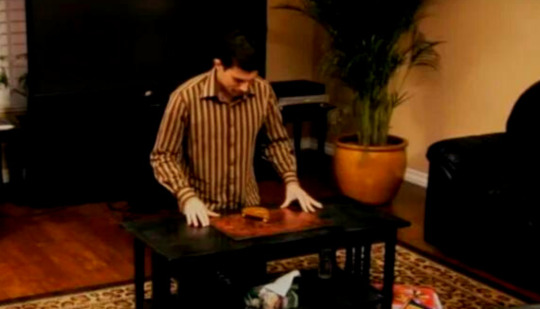
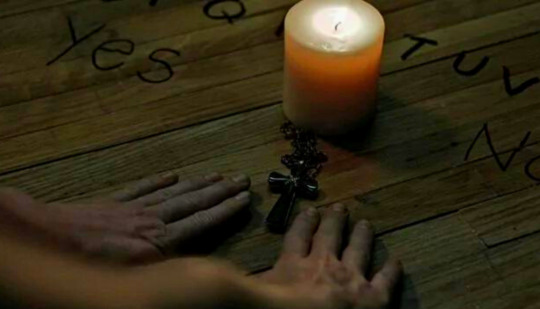




horror + ouija boards
13 ghosts (1960)
the exorcist (1973)
satan’s blood (1978)
witchboard (1987)
what lies beneath (2000)
paranormal activity (2007)
the pact (2012)
ouija (2014)
the conjuring 2 (2016)
veronica (2017)
the addams family (2019)
#horror#horror movies#13 ghosts#the exorcist#satan's blood#witchboard#what lies beneath#paranormal activity#the pact#ouija#the conjuring 2#veronica#the addams family#movies#filmedit#horroredit#cinema#ouija boards
280 notes
·
View notes
Text

Vladimir Nikolaevich Nemukhin (?) (1925-2016). Jack. 1988.
Paper, mixed media, collage. 40x58 (in the light), 64x82 cm (on the frame).
Bottom in the middle - the author's signature and year.
Decorated in a frame and a passage under the glass.
Vladimir Nikolaevich Nemukhin (1925-2016) - Russian artist, member of the Lianozovskaya Group, representative of unofficial art, one of the classics of the second wave of the Russian avant-garde. In 1943-1946 he studied at the Moscow art studio of the VTsCP. In the fifties, he worked as a designer and posterist. In 1957 he entered the Moscow State Art Institute named after C I. Surikova (soon expelled for disagreeing with the principles of socialist realism). Since 1965, he has participated in foreign exhibitions (USA, Poland, Italy, France). Member of the "Lianozovskaya group" formed in the mid-1960s around E.L. Kropivnitsky. He actively participated in private apartment and public exhibitions of avant-garde art, including the "bulldozer exhibition" (1974). Since the late 1960s, his painting has been increasingly recognized in the West. He turned to sculptural-three-dimensional abstractions, biomorphic or geometric (a series of "compositions-dedications" by D.M. Krasnopeevtsev, E.A. Steinberg and P. Cezanne). Since the 1990s, he has lived in Germany (Düsseldorf), but regularly came to Russia, where since 2000 his works have occupied a prominent place in the State TBG and the Moscow Museum of Modern Art.
Alters
14 notes
·
View notes
Text
As y'all know, BTS is celebrating their 10 year anniversary this year! Crazy that they've been together for 10 years...even longer if you consider the time before their offical debut. Sometimes it seems like 10 years is not that long of a time cause we just love them SO much. So it got me thinking about other similar groups/bands and how long they were together in comparison to BTS.
The Beatles: I included the Beatles because I have seen BTS compared to them in terms of their influence on the music industry and their popularity. They initially formed in 1958 and slowly built their fanbase by playing gigs in England from 1960-1963. By 1964 we saw "Beatlemania" in full force. For 10 years they dominated the music scene until they broke up in 1970. At this point and began to pursue solo careers. Over the years they have had many partial reunions.
New Kids on The Block: They formed in 1984 and were active until 1994. Then came back in 2008. They were the first modern era "boy band" to achieve such a high level of success.
Back Street Boys: They formed in 1993 and released a greatest hits album in 2001 before taking a 2 year hiatus. After that time they came back together for reunions multiple times. Some of them enoyed moderate success as solo artists over the years but never the level of success they had as a group. In 2023 they celebrated their 30 year anniversary.
N'Sync: They formed in 1995 and last released new material in 2002 before going on hiatus. I'm sure we all know who the break out solo artist of the band was... a one Mr. Justin Timberlake. He stills continues to have massive success to this day, even moving into acting.
One Direction: they formed in 2010 and were together until 2016. Many of the band members have had successful solo careers. Hands down the most successful member is none other than Mr. Harry Styles. Much like Justin Timberlake, his star continues to rise!
So BTS has been around the same time or longer than some of these other groups. I think one of the big differences is that they really have given us unprecedented access into their lives. SM has made all of that possible. I think that's why so many of us have come to love them even more... we just know so much more about them. And the crazy thing is, for as much as we do know; there is still so much we don't know. I think over time, especially after MS, they will open up a bit more to us. I am looking forward to those days!!!!!
29 notes
·
View notes
Text
Stats from Movies 501-600
Top 10 Movies - Highest Number of Votes

Drag Me To Hell (2009) had the most votes with 1,156 votes.
The Sudbury Devil (2023) had the least votes with 363 votes.
The 10 Most Watched Films by Percentage
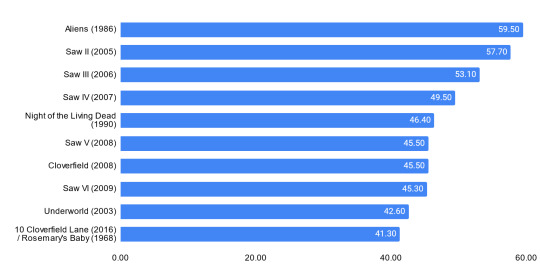
Aliens (1989) was the most watched film with 59.5% of voters out of 785 saying they had seen it.
Roadkill (2011) had the least "Yes" votes with 1.0% of voters out of 597.
The 10 Least Watched Films by Percentage
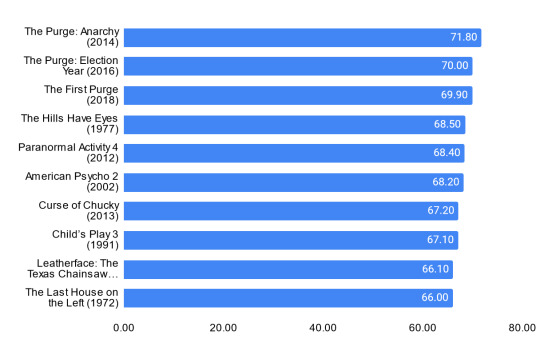
The Purge: Anarchy (2014) was the least watched film with 71.8% of voters out of 570 saying they hadn’t seen it.
Awoken (2020) had the least "No" votes with13.4% of voters out of 677.
The 10 Most Known Films by Percentage

Aliens (1989) was the best known film, only 1.1% of voters out of 785 saying they’d never heard of it.
The 10 Least Known Films by Percentage

The Sudbury Devil (2023) was the least known film, 86,2% of voters out of 368 saying they’d never heard of it.
The movies part of the statistic count and their polls below the cut.
Wrong Turn 2: Dead End (2007)
Wrong Turn 3: Left for Dead (2009)
Wrong Turn 4: Bloody Beginnings (2011)
Wrong Turn 5: Bloodlines (2012)
Wrong Turn 6: Last Resort (2014)
Leatherface: The Texas Chainsaw Massacre III (1990)
Texas Chainsaw 3D (2013)
The Texas Chainsaw Massacre: The Beginning (2006)
Ghostwatch (1992)
Nekromantik (1988)
Hostel: Part II (2007)
Hostel: Part III (2011)
Antiviral (2012)
Dead Ringers (1988)
Drag Me to Hell (2009)
Becky (2020)
Stepfather 3 (1992)
Roadkill (2011)
Black Sheep (2006)
Awoken (2019)
Exeter (2015)
Excision (2012)
Psycho Goreman (2020)
V/H/S/94 (2021)
The Lair of the White Worm (1988)
Mad God (2021)
Dash (2022)
Don't Open Till Christmas (1984)
C.H.U.D. (1984)
Satan's Slave (1976)
Bad Taste (1987)
The Deadly Spawn (1983)
Let's Scare Jessica to Death (1971)
Dark Night of the Scarecrow (1981)
Laid to Rest (2009)
Chromeskull: Laid to Rest 2 (2011)
Rosemary's Baby (1968)
The Midnight Meat Train (2008)
Underworld (2003)
The Last House on the Left (1972)
Little Shop of Horrors (1960)
The Hills Have Eyes (1977)
Aliens (1986)
Wrong Turn (2021)
A Haunting in Venice (2023)
Old (2021)
Cloverfield (2008)
10 Cloverfield Lane (2016)
Cloverfield Paradox (2018)
The Invitation (2022)
Saw II (2005)
Saw III (2006)
Saw IV (2007)
Saw V (2008)
Saw VI (2009)
The Curse of La Llorona (2019)
Saltburn (2023)
Saw 3D (2010)
Jigsaw (2017)
Spiral (2021)
Child's Play 2 (1990)
Child's Play 3 (1991)
Bride of Chucky (1998)
Seed of Chucky (2004)
Curse of Chucky (2013)
Cult of Chucky (2017)
Paranormal Activity 2 (2010)
Paranormal Activity 3 (2011)
Paranormal Activity 4 (2012)
Paranormal Activity: The Marked Ones (2014)
Paranormal Activity: The Ghost Dimension (2015)
Paranormal Activity: Next of Kin (2021)
The Purge: Anarchy (2014)
The Purge: Election Year (2016)
The First Purge (2018)
The Forever Purge (2021)
Don't Breathe (2016)
Don't Breathe 2 (2021)
American Psycho 2 (2002)
Dawn of the Dead (1978)
Day of the Dead (1985)
Night of the Living Dead (1990)
Diary of the Dead (2007)
Survival of the Dead (2009)
Happy Birthday to Me (1981)
Bloody New Year (1987)
Saw X (2023)
Pieces (1982)
The Sudbury Devil (2023)
Demon (2015)
Butterfly Kisses (2018)
12 Hour Shift (2020)
Bloody Birthday (1981)
Def by Temptation (1990)
The Hunt (2020)
Godzilla (1954)
The Babysitter (2017)
The Babysitter: Killer Queen (2020)
The Silenced (2015)
25 notes
·
View notes
Text
October/Halloween Movie List Inspo by Theme!!!!
I probably forgot or omitted a ton of stuff so please don't get mad lol. Most of the older ones are available on YouTube or Tubi, the majority are in English, and most of the lists are in chronological order. I also avoided most sequels for simplicity's sake. I've seen most but not all of these so no content warnings are listed, so be sure to check accordingly.
🎃💀🎃💀🎃💀🎃💀
The Silent Era:
The Cabinet of Dr. Caligari (1920)
Dr. Jekyll and Mr. Hyde (1920)
The Phantom Carriage (1921)
Nosferatu (1922)
Häxan (1922)
The Hunchback of Notre Dame (1923)
The Phantom of the Opera (1925)
Faust (1926)
Vampyr (1932) (Almost silent)
The Universal Monsters Starter Pack
Dracula (1931)
Frankenstein (1931)
The Mummy (1932)
The Invisible Man (1933)
Bride of Frankenstein (1935)
The Wolf Man (1941)
Creature from the Black Lagoon (1954)
Best of Hitchcock Horror
Rope (1948)
Strangers on a Train (1951)
Rear Window (1954)
Vertigo (1958)
Psycho (1960)
The Birds (1963)
Classic Slashers
The Texas Chainsaw Massacre (1974)
Halloween (1978)
Friday the 13th (1980)
The Evil Dead (1981)
A Nightmare on Elm Street (1984)
Child's Play (1988)
Candyman (1992)
Scream (1996)
The "Science Fiction/Double Feature" Collection from the Rocky Horror intro:
The Day the Earth Stood Still (1951)
Flash Gordon (various serials 1936-1940)
The Invisible Man (1933)
King Kong (1933)
It Came From Outer Space (1953)
Doctor X (1932)
Forbidden Planet (1956)
Tarantula! (1955)
The Day of the Triffids (1962)
Night of the Demon (1957)
When Worlds Collide (1951)
Cult Classic and B-movie MegaMarathon
Them! (1954)
The Blob (1958)
Plan 9 From Outer Space (1959)
The Beast of Yucca Flats (1961)
Night of the Living Dead (1968)
The Wicker Man (1973)
The Phantom of the Paradise (1974)
The Rocky Horror Picture Show (1975)
Eraserhead (1977)
Attack of the Killer Tomatoes (1978)
The Thing (1981)
The Evil Dead (1981)
Clue (1985)
Elvira (1988)
Killer Klowns from Outer Space (1988)
Donnie Darko (2001)
Birdemic (2008)
Jennifer's Body (2009)
The "I Miss the Old Tim Burton" Watch List
Vincent (1982)
Beetlejuice (1988)
Batman (1989)
Edward Scissorhands (1990)
The Nightmare Before Christmas (1993)
Sleepy Hollow (1993)
Mars Attacks (1996)
The Corpse Bride (2005)
Sweeney Todd (2007)
Dark Shadows (2012)
Macabre Musicals
The Phantom of the Paradise (1974)
The Rocky Horror Picture Show (1975)
Little Shop of Horrors (1986)
The Nightmare Before Christmas (1993)
Corpse Bride (2005)
Sweeney Todd (2007)
Repo! The Genetic Opera (2008)
The Lure (2015)
The 90s Nostalgia Mixtape
Edward Scissorhands (1990)
The Witches (1990)
The Addams Family (1991)
Death Becomes Her (1992)
Hocus Pocus (1993)
The Nightmare Before Christmas (1993)
Casper (1995)
The Craft (1996)
Scream (1996)
Halloweentown (1998)
The Blair Witch Project (1999)
The "God Forbid Women Do Anything" MegaMarathon
Carrie (1976)
Suspiria (1977)
Heathers (1989)
The Witches (1990)
The Craft (1996)
Ringu (1998)
Ginger Snaps (2000)
Teeth (2007)
Jennifer's Body (2009)
Black Swan (2010)
A Girl Walks Home Alone at Night (2014)
The Lure (2015)
The VVitch (2015)
Raw (2016)
Midsommar (2019)
Us (2019)
Last Night in Soho (2021)
X (2022)
Scary Found Footage
The Blair Witch Project (1999)
Rec (2007)
Paranormal Activity (2007)
Cloverfield (2008)
Lake Mungo (2008)
Unfriended (2014)
As Above, So Below (2014)
Creep (2014)
Host (2020)
Dracula Through the Ages
Nosferatu (1922)
Dracula (1931)
Horror of Dracula (1958)
Dracula (1979)
Nosferatu the Vampyre (1979)
The Monster Squad (1987)
Bram Stoker's Dracula (1992)
Van Helsing (2004)
Dracula Untold (2014)
The Film Bro Starter Pack (Spooky Edition)
The Exorcist (1973)
Alien (1979)
The Shining (1980)
The Silence of the Lambs (1991)
American Psycho (2000)
Donnie Darko (2001)
Get Out (2017)
Eye Candy
Suspiria (1977)
Bram Stoker's Dracula (1992)
Pan's Labyrinth (2006)
Coraline (2009)
Crimson Peak (2015)
The Love Witch (2016)
The Neon Demon (2016)
Mandy (2018)
Last Night in Soho (2021)
The Munsters (2022)
Movies My Mom Doesn't Realize Are Gay
Rope (1948)
A Nightmare on Elm Street 2 (1985)
The Lost Boys (1987)
Hellraiser (1987)
Interview with the Vampire (1994)
The Craft (1996)
Black Swan (2010)
132 notes
·
View notes
Photo

If he became an undertaker, people would stop dying.
- F1 World Champion Mario Andretti on Chris Amon
Christopher Arthur Amon MBE (1943-2016) was a New Zealand motor racing driver. He was active in Formula One racing in the 1960s and 1970s, and is widely regarded as one of the best F1 drivers never to win a championship Grand Prix. His reputation for bad luck was such that former Ferrari Technical Director Mauro Forghieri stated that Amon was "by far the best test driver I have ever worked with. He had all the qualities to be a World Champion but bad luck just wouldn't let him be.”
Photo: Chris Amon driving his Ferrari 312 at the British Grand Prix at Brands Hatch, 20 July 1968.
#andretti#mario andretti#quote#chris amon#amon#new zealand#formula one#grand prix#F1#racing#racer#driver#motorsports#sports#ferrari
70 notes
·
View notes
Note
I won't spoil Alan wake ii if you havent played it yet, but ngl while I dont think Kojima is bad at all, its really opening my eyes a bit. Sam Lake (real last name is finnish or a lovecraftian god) uses what he's inspired by way more integrated into his games. And the interplay of multiple forms of media including live action and music and, god help me for uttering this overused phrase, playing with the fourth wall, is something that makes Kojima look like simultaneously like an amateur and an elitist at the same time.
Let's say Kojima likes David Bowie. He'd have a character named David Bowie, Otacon would call in on the comms and say "Snake, that's david bowie. He's named after David Bowie the singer. He was a glam rock singer active from the late 1960s to 2016 most known for Ziggy Stardust" and the entire thing would be a thinly veiled excuse to hang out with David Bowie and put his likeness in the game and maybe release some haute couture sunglasses or something, while also namedropping extremely esoteric things Kojima can feel smart over knowing people will have to go to Wikipedia to understand the concepts he stayed up last weekend reading about. I cant really give an example for Alan Wake/Control like that entirely because everything is so worked in. Yeah its clearly Twin Peaks and X-Files and True Detective and a bit of that sparse Scandinavian Noir and some Lovecraft as well. But everything is blended together without coming to a screeching halt while you listen to the games creator tell you about the stuff he likes.
Not that I dislike MGS or anything, but in terms of "visionary" creators I think Sam Lake has just pulled ahead of Kojima in a really big way. He feels more like those TGWTG people who were only there as a stepping stone to their big hollywood career (which never panned out) and likewise Kojima treats his games more like the artsy movies he's always wanted to make instead of trying to be truly creative.
That's essentially the conclusion I've come to, yeah. Plus, Lake seems to embrace making games while Kojima seems to bitterly regret that he'd be laughed out of Hollywood.
Hell, MGS is supposed to be like an overblown, larger-than-life metaphor/representation of real, serious topics like nuclear proliferation and yadda yadda yadda. Except it gets muddled and stupid because the mechs that symbolize nuclear weapons are just dangerous for being nuclear launch platforms, because metaphors are hard. 30% of the earth's population was a child soldier who now wanders the land fighting for obscure philosophical reasons but shows little to none of the actual problems associated with former child soldiers, and 45% of all military personnel are clones or genetically engineered or turbocyborgs or something. Because this story that tries to touch on Very Serious Issues about soldiers and their place in the world was written in a country with pretty much 0 living combat veterans by a man who's never raised a fist in anger
13 notes
·
View notes
Note
Hello I just wanted to say that I love your blog! I am Mexican, and I am very glad that there's places where minority languages are appreciated and not dismissed, and that are actually spoken by a lot of people. I think we should do that here. It's awesome to see a language thrive like that, being that the fascist regime tried to erase it and all.
Anyway, my question is about the history of the catalan language, as I am not very familiar with it, outside of the fact that there was a guy that didn't like it much and kinda tried to ban it. And I wanted to know if you knew anything about that and specifically about how the language recovered from that (if that is OK)
Anyway sorry if this is a bother much love <3
Thank you so much for your interest and your kind words ☺️
Here's three posts that will help you get a general view of what has been happening for centuries. It’s not only one dictator who banned it (though Franco’s persecution was particularly thorough and recent) but a longer process that was fuelled by Spanish imperialism, hatred towards the Catalan people, and the want to create a unified and homogenous Spain (that never existed in the first place) through the extermination of non-Spanish cultures, languages and identities.
Summing up Catalanophobia through the ages
Prohibitions of the Catalan language throughout history: 16th-19th centuries
Prohibitions of the Catalan language throughout history: 20th and 21st centuries (up to 2016, which is when I wrote the post)
You can find many more posts explaining particular situations in this blog's tag #catalanophobia. I don't "report" on nearly everything that happens (I'm not a news channel, I don't have that much time and it would be depressing lol) but I've commented on quite a few things.
About the second part of your question, the Catalan language was never lost nor close to extinction, in fact the moment where a lowest percentage of the Catalan population speaks Catalan is now. What happened is that, after the War of the Spanish Succession in which Spain (Castilla) militarily occupied the Catalan Countries and forbid the use of Catalan language, Catalan stopped being a prestigious language or a language used in official documents. The prestigious language then became Spanish, which means that the aristocracy would speak in Spanish, official documents were written only in Spanish, books were printed in Spanish, etc., but the huge majority of the population did not speak (and in many cases did not even understand much) Spanish.
That means that what later needed to be "recovered" was not the language itself, but its literary use and social role. That is, it needed to stop being seen as a language only "for the lower class to do their lower class things" -in contraposition to Spanish, the "important language for important matters"- and become, once more as it had been centuries ago, a language that can be used in all settings, including literature, science, government, etc.
This movement happened in the 19th century and is called Renaixença ("Rebirth"). It's contemporary to the Romanticism movement, so it can be seen as our version of it, with a more political/social role. This movement was centered on using the language in literary settings, as well as newspapers, learning about our history, and asking for cultural and linguistic rights. This is the moment when the first political Catalanist movement became well organized and active.
The decline in use of Catalan language started after the Renaixença had happened. It started to change with the introduction of mandatory schools, and by the 1920s many people (especially in urban areas) could speak Spanish, even though the everyday language was still Catalan. We got a huge immigration wave from Southern Spain in the 1920s that triplicated the population of Catalonia, and again in the 1960s Catalonia triplicated once again the population with people coming from Spain. Many of them integrated, many even risked being in danger by joining clandestine Catalan classes. But it was the time of the dictatorship, where many others were convinced Catalan was inferior or simply useless. With the political pressure and persecution, the social discrimination and the smaller amount of media available compared to Spanish, with time Spanish has imposed itself as the "cool" language that people want to associate themselves with because it's "better", "important", and "universal". A lot of Spanish imperialist propaganda is still believed, and most Catalan people have a lot of internalized Catalanophobia that makes us believe we can only be worthy if we abandon our language.
But luckily many people have fought a lot! Mobile clandestine libraries with books in Catalan, secret classes, field trips with safe people to speak to, the anti-fascist fight, and everyone who chose to speak it every day are what has kept it through the dictatorship's persecution.
The key to language survival is to have conscience and to use language in all settings, from speaking to your friends and family informally to teaching university classes in it or writing science and philosophy papers in it. And that's precisely some of the fights we're in rn: as an example on one side, because the Spanish judicial system keeps forcing schools to teach more in Spanish and less in Catalan; on the other, we're campaigning to have entertainment in Catalan, especially for children to grow up hearing that people they look up to can also speak their language, so we're trying to get streaming platforms to incorporate Catalan dubs.
(I'm talking about Spanish because the most part of the Catalan Countries are under Spanish rule, but the same applies with French instead of Spanish in Northern Catalonia).
#ask#anonymous#història#llengua catalana#català#coses de la terra#minority languages#sociolinguistics#spain
44 notes
·
View notes
Text
Tony Bennett, Jazzy Crooner of the American Songbook, Is Dead at 96
From his initial success at the Paramount in Times Square through his generation-spanning duets, his career was remarkable for both its longevity and its consistency.

By Bruce Weber
July 21, 2023
Tony Bennett, a singer whose melodic clarity, jazz-influenced phrasing, audience-embracing persona and warm, deceptively simple interpretations of musical standards helped spread the American songbook around the world and won him generations of fans, died on Friday at his home of many decades in Manhattan. He was 96.
His publicist, Sylvia Weiner, announced his death.
Mr. Bennett learned he had Alzheimer’s disease in 2016, his wife, Susan Benedetto, told AARP The Magazine in February 2021. But he continued to perform and record despite his illness; his last public performance was in August 2021, when he appeared with Lady Gaga at Radio City Music Hall in a show titled “One Last Time.”
Mr. Bennett’s career of more than 70 years was remarkable not only for its longevity, but also for its consistency. In hundreds of concerts and club dates and more than 150 recordings, he devoted himself to preserving the classic American popular song, as written by Cole Porter, the Gershwins, Duke Ellington, Rodgers and Hammerstein and others.
From his initial success as a jazzy crooner who wowed audiences at the Paramount in Times Square in the early 1950s, through his late-in-life duets with younger singers gleaned from a range of genres and generations — most notably Lady Gaga, with whom he recorded albums in 2014 and 2021 and toured in 2015 — he was an active promoter of both songwriting and entertaining as timeless, noble pursuits.
Mr. Bennett stubbornly resisted record producers who urged gimmick songs on him, or, in the 1960s and early ’70s, who were sure that rock ’n’ roll had relegated the music he preferred to a dusty bin perused only by a dwindling population of the elderly and nostalgic.
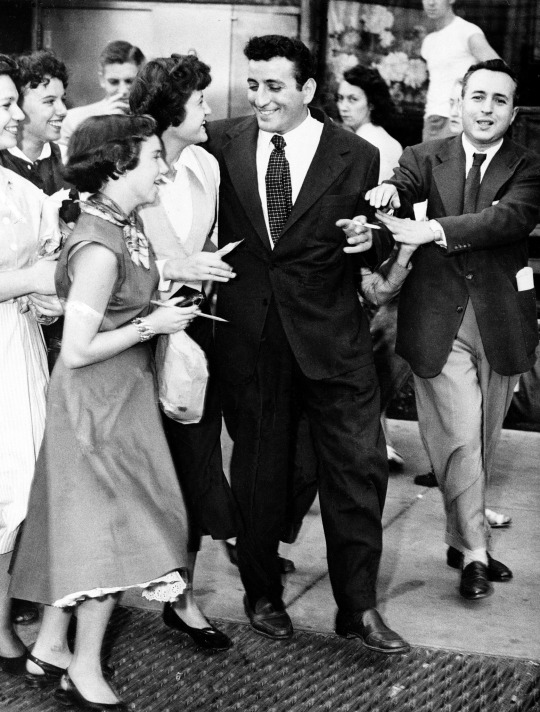
Instead, he followed in the musical path of the greatest American pop singers of the 20th century — Louis Armstrong, Bing Crosby, Judy Garland, Billie Holiday, Frank Sinatra — and carried the torch for them into the 21st. He reached the height of stardom in 1962 with a celebrated concert at Carnegie Hall and the release of his signature song, “I Left My Heart in San Francisco.” And though he saw his popularity wane with the onset of rock and his career went through a trough in the 1970s, when professional difficulties were exacerbated by a failing marriage and drug problems, he was, in the end, more than vindicated in his musical judgment.
“I wanted to sing the great songs, songs that I felt really mattered to people,” he said in “The Good Life” (1998), an autobiography written with Will Friedwald.
It’s hard to overstate Mr. Bennett’s lasting appeal. He was still singing “San Francisco” — which led many people to think he was a native of that city, though he was actually a through-and-through New Yorker — more than half a century later. He sang on Ed Sullivan’s show and David Letterman’s. He sang with Rosemary Clooney when she was in her 20s, and Celine Dion when she was in her 20s.
He made his film debut in 1966, in a critically reviled Hollywood story, “The Oscar,” playing a man betrayed by an old friend. And though he did not pursue an acting career, decades later he was playing himself in movies like the Robert De Niro-Billy Crystal gangster comedy “Analyze This” and the Jim Carrey vehicle “Bruce Almighty.” He was 64 when he appeared as a cartoon version of himself on “The Simpsons.” He was 82 when he appeared on the HBO series “Entourage,” performing one of his trademark songs, “The Good Life.”
A lifelong liberal Democrat, Mr. Bennett participated in the Selma-to-Montgomery civil rights march in 1965, and, along with Harry Belafonte, Sammy Davis Jr. and others, performed at the Stars for Freedom rally on the City of St. Jude campus on the outskirts of Montgomery on March 24, the night before the Rev. Dr. Martin Luther King Jr. delivered the address that came to be known as the “How Long? Not Long” speech. At the conclusion of the march, Viola Liuzzo, a volunteer from Michigan, drove Mr. Bennett to the airport; she was murdered later that day by members of the Ku Klux Klan.
Mr. Bennett also performed for Nelson Mandela, then the president of South Africa, during his state visit to England in 1996. He sang at the White House for John F. Kennedy and Bill Clinton, and at Buckingham Palace at Queen Elizabeth II’s 50th anniversary jubilee.
An ‘Elusive’ Voice
He won his first two Grammy Awards, for “San Francisco,” in 1963, and his last, for the album “Love for Sale,” with Lady Gaga, last year. Altogether there were 20 of them, including, in 2001, a lifetime achievement award. By some estimates, he sold more than 60 million records.
The talent that spawned this success and popularity was not so easy to define. Neither a fluid singer nor an especially powerful one, he did not have the mellifluous timbre of Crosby or the rakish swing of Sinatra. If Armstrong’s tone was distinctively gravelly, Mr. Bennett’s wasn’t quite; “sandy” was more like it. Almost no one denied that his voice was appealing, but critics strove mightily to describe it, and then to justify its appeal.
“The voice that is the basic tool of Mr. Bennett’s trade is small, thin and somewhat hoarse,” John S. Wilson wrote in The New York Times in 1962. “But he uses it shrewdly and with a skillful lack of pretension.”
In a 1974 profile, Whitney Balliett, the longtime jazz critic for The New Yorker, called Mr. Bennett “an elusive singer.”
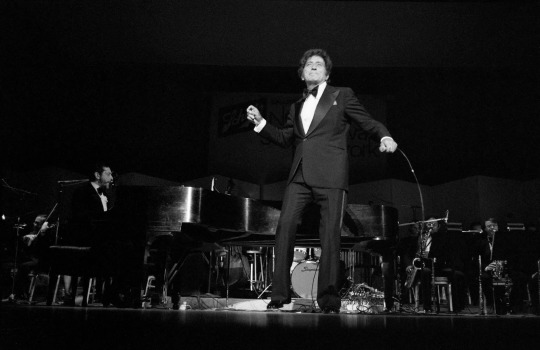
“He can be a belter who reaches rocking fortissimos,” Mr. Balliett wrote. “He drives a ballad as intensely and intimately as Sinatra. He can be a lilting, glancing jazz singer. He can be a low-key, searching supper-club performer.” But, he added, “Bennett’s voice binds all his vocal selves together.”
Most simply, perhaps, the composer and critic Alec Wilder said about Mr. Bennett’s voice, “There is a quality about it that lets you in.”
Indeed, what many listeners (including the critics) discovered about Mr. Bennett, and what they responded to, was something intangible: the care with which he treated both the song and the audience.
He had a storyteller’s grace with a lyric, a jazzman’s sureness with a melody, and in his finest performances he delivered them with a party giver’s welcome, a palpable and infectious affability. In his presentation, the songs he loved and sang — “Just in Time,” “The Best Is Yet to Come,” “Rags to Riches” and “I Wanna Be Around,” to name a handful of his emblematic hits — became engaging, life-embracing parables.
Frank Sinatra, whom Mr. Bennett counted as a mentor and friend, once put it another way.
“For my money, Tony Bennett is the best singer in the business,” he told Life magazine in 1965. “He excites me when I watch him. He moves me. He’s the singer who gets across what the composer has in mind, and probably a little more.”

Mr. Bennett passed through life with as unscathed a public image as it is possible for a celebrity to have. Finding even mild criticism of him in reviews and interviews is no mean feat, and even his outspoken liberalism generally failed to attract vitriol from the right. (An exception was his call, after the drug-related deaths of Michael Jackson, Amy Winehouse and Whitney Houston, for the legalization of drugs, a view loudly denounced by William J. Bennett, the former drug czar, among others.)
With the possible exception of his former wives, everyone, it seemed, loved Tony Bennett. Skeptical journalists would occasionally try to pierce what they perceived as his perfect veneer, but they generally discovered that there wasn’t much to pierce.
“Bennett is outrageous,” Simon Hattenstone, a reporter for The Guardian, wrote in 2002. “He mythologizes himself, name-drops every time he opens his mouth, directs you to his altruism, is self-congratulatory to the point of indecency. He should be intolerable, but he’s one of the sweetest, most humble men I’ve ever met.”
Son of Queens
Anthony Dominick Benedetto was born on Aug. 3, 1926, in the Long Island City neighborhood of Queens, and grew up in that borough in working-class Astoria. His father, Giovanni, had emigrated from Calabria, in southern Italy, at age 11. His mother, Anna (Suraci) Benedetto, was born in New York in 1899, having made the sea journey from Italy in the womb. Their marriage was arranged. Giovanni and Anna were cousins; their mothers were sisters.
In New York, where Giovanni Benedetto became John, he was a grocer, but beleaguered by poor health and often unable to work. Anna was a factory seamstress and took in additional sewing to support the family. Anthony was their third child, their second son, and the first of any Benedetto to be born in a hospital. Giovanni, who sang Italian folk songs to his children — “My father inspired my love for music,” Mr. Bennett wrote in his autobiography — died when Anthony was 10.
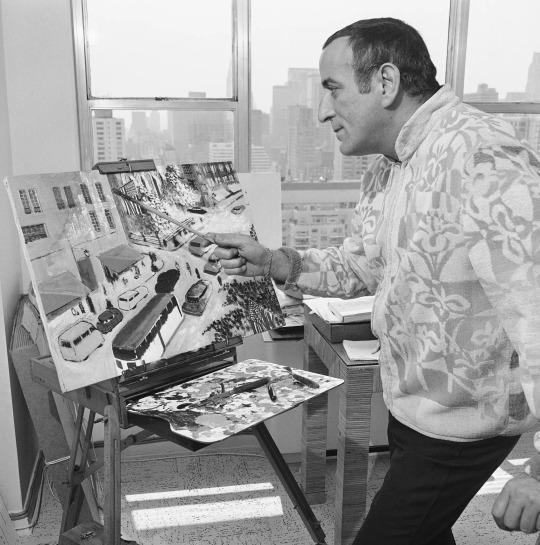
Anthony sang from an early age, and drew and painted, too. He would become a creditable painter as an adult, mostly landscapes and still lifes in watercolors and oils and portraits of musicians he admired, signing his paintings “Benedetto.” His first music teacher arranged for him to sing alongside Mayor Fiorello La Guardia at the opening of the Triborough Bridge (now the Robert F. Kennedy Bridge) in 1936.
For a time he attended the High School for Industrial Arts (now called the High School of Art and Design) in Manhattan, but he never graduated. He dropped out and found work as a copy boy for The Associated Press, in a laundry and as an elevator operator.
“I couldn’t figure out how to get the elevator to stop at the right place,” he recalled. “People ended up having to crawl out between floors.”
At night he performed at amateur shows and worked as a singing waiter. He had just begun to get paying work as a singer, using the stage name Joe Bari, when he was drafted.
He arrived in Europe toward the end of World War II, serving in Germany in the infantry. He spent time on the front lines, an experience he described as “a front-row seat in hell,” and was among the troops who arrived to liberate the prisoners at the Landsberg concentration camp, a subcamp of Dachau.
After Germany surrendered, Mr. Bennett was part of the occupying forces, assigned to special services, where he ended up as a singer with Army bands and for a time was featured in a ragtag version of the musical “On the Town” — directed by Arthur Penn, who would go on to direct “Bonnie and Clyde” and other notable movies — in the opera house in Wiesbaden.
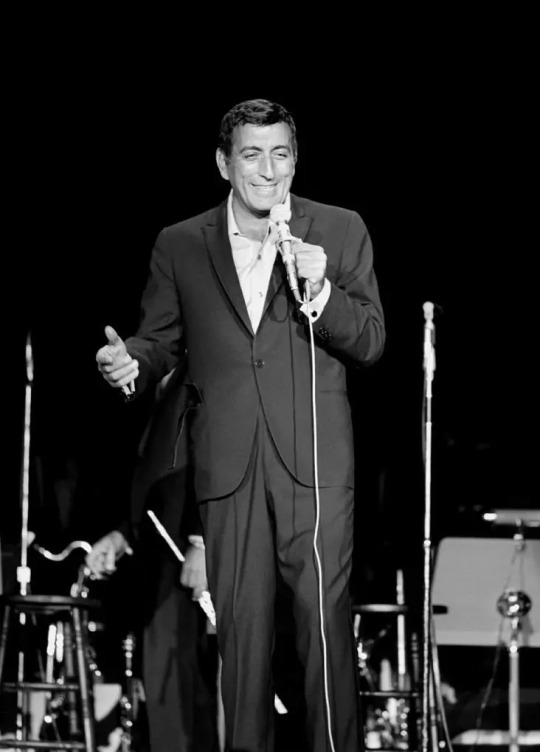
He returned to New York in August 1946 and set about beginning a career as a musician. On the G.I. Bill, he took classes at the American Theater Wing, which he later said helped teach him how to tell a story in song. He sang in nightclubs in Manhattan and Queens.
A series of breaks followed. He appeared on the radio show “Arthur Godfrey’s Talent Scouts,” the “American Idol” of its day. (The competition was won by Rosemary Clooney.) There are different versions of the biggest break in Mr. Bennett’s early career, but as he told it in “The Good Life,” he had been singing occasionally at a club in Greenwich Village where the owner had offered Pearl Bailey a gig as the headliner; she agreed, but only on the condition that Joe Bari stayed on the bill.
When Bob Hope came down to take in Ms. Bailey’s act, he liked Joe Bari so much that he asked him to open for him at the Paramount Theater. Hope had a condition, however: He didn’t like the name Joe Bari, and insisted it be changed. Dismissing the name Anthony Benedetto as too long to fit on a marquee, Hope christened the young singer Tony Bennett.
The Hits Roll In
The producer Mitch Miller signed Mr. Bennett to Columbia Records in 1950; “Boulevard of Broken Dreams” was his first single. Miller was known for his hit-making prowess, a gift that often involved matching talented singers with novelty songs or having them cover hits by others, for which he was criticized by more serious music fans and sometimes by the singers themselves.
He and Mr. Bennett had a contentious relationship. Mr. Bennett resisted his attempts at gimmickry; Miller, who believed that the producer and not the singer was in charge of a recording, applied his authority. Still, together they achieved grand success.
By mid-1951, Mr. Bennett had his first No. 1 hit, “Because of You.” That same year, his version of the Hank Williams ballad “Cold, Cold Heart” also hit No. 1; three years after Williams died in 1953, Mr. Bennett performed it in his honor at the Grand Ole Opry in Nashville.
Other trademark songs followed: “Rags to Riches” in 1953; “Stranger in Paradise,” from the Broadway show “Kismet,” also in 1953; Jule Styne, Betty Comden and Adolph Green’s “Just in Time,” from the show “Bells Are Ringing,” in 1956. That same year, Mr. Bennett was host of his own television variety show, a summer replacement for a similar show that starred another popular Italian American crooner, Perry Como. In 1958, he recorded two albums with the Count Basie band, introducing him to the jazz audience.
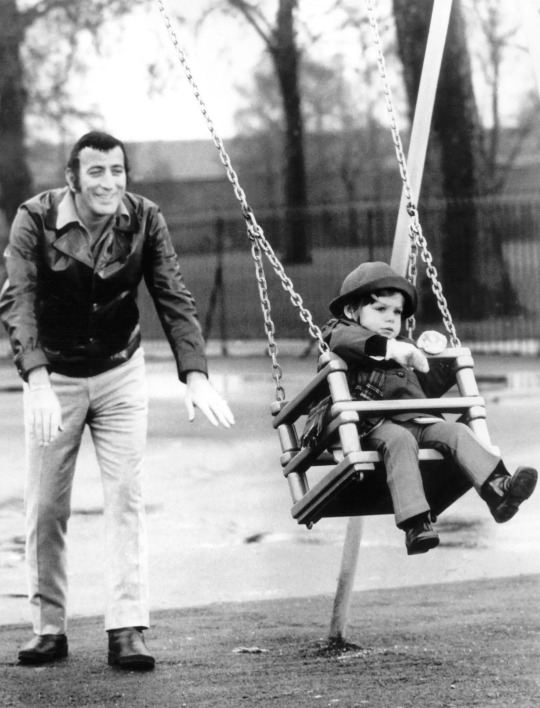
In the 1950s, Mr. Bennett toured for the first time, played Las Vegas for the first time and got married for the first time, to Patricia Beech, a fan who had seen him perform in Cleveland. The marriage would flounder in the 1960s, overwhelmed by Mr. Bennett’s perpetual touring, but their two sons would end up playing roles in Mr. Bennett’s career: the older one, D’Andrea, known as Danny, became his father’s manager, and Daegal, known as Dae, became a music producer and recording engineer.
In July 1961, Mr. Bennett was performing in Hot Springs, Ark., and about to head to the West Coast when Ralph Sharon, his longtime pianist, played him a song written by George Cory and Douglass Cross that had been moldering in a drawer for two years. Mr. Sharon and Mr. Bennett decided that it would be perfect for their next date, at the Fairmont Hotel in San Francisco, and it was.
They recorded the song — of course it was “I Left My Heart in San Francisco” — six months later, in January 1962. It won Mr. Bennett his first two Grammys, for best male solo performance and record of the year, and worldwide fame. In “The Good Life,” he wrote that he was often asked if he ever tired of singing it.
“I answer, ‘Do you ever get tired of making love?’” he wrote.
Just five months later, Mr. Bennett performed at Carnegie Hall with Mr. Sharon and a small orchestra. He got sensational reviews — though The Times’s was measured — and the recording of the concert is now considered a classic.
But as the 1960s proceeded and rock ’n’ roll became dominant, Mr. Bennett’s popularity began to slip. In 1969, he succumbed to the pressure of the new president of Columbia Records, Clive Davis, to record his versions of contemporary songs, and the result, “Tony Sings the Great Hits of Today!” — including the Beatles’ “Eleanor Rigby” and “Something” — was a musical calamity, a record that Mr. Bennett would later tell an interviewer made him vomit.
His relationship with Columbia soured further and finally ended, and by the middle of the 1970s Mr. Bennett had formed his own company, Improv Records, on which he recorded the first of two of his most critically admired albums, duets with the jazz pianist Bill Evans. (The second one was released on Evans’s label, Fantasy.) Together the two opened the Newport Jazz Festival, which had moved to New York, at Carnegie Hall in 1976.
Improv went out of business in 1977, and without a recording contract Mr. Bennett relied more and more on Las Vegas, then in decline, for regular work. His mother died that year, and the profligate life he had been living in Beverly Hills caught up with him; the Internal Revenue Service was threatening to take his house. His second marriage, a tumultuous one to the actress Sandra Grant, collapsed — she would later say that she would have been better off if she had married her previous boyfriend, Joe DiMaggio — and he had begun using marijuana and cocaine heavily.
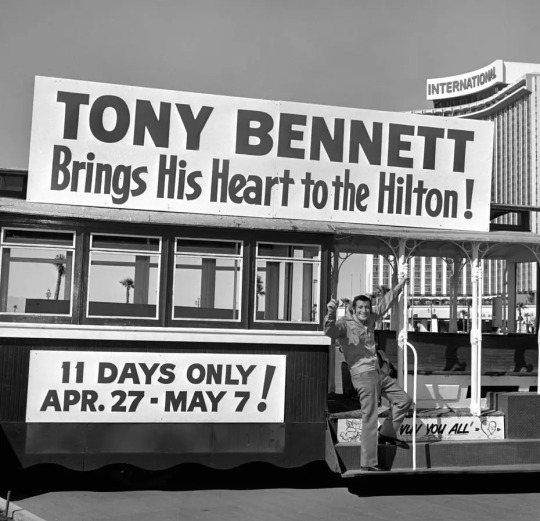
One day in 1979, high and in a panic, he took a bath to calm down and nearly died in the tub. In later years he would play down the seriousness of the event, but he wrote about it in “The Good Life,” describing what he called a near-death experience: “A golden light enveloped me in a warm glow. It was quite peaceful; in fact, I had the sense that I was about to embark on a very compelling journey. But suddenly I was jolted out of the vision. The tub was overflowing and Sandra was standing above me. She’d heard the water running for too long, and when she came in I wasn’t breathing. She pounded on my chest and literally brought me back to life.”
Mr. Bennett turned to his older son for help. Danny Bennett took over the management of his career, aiming to have the American musical standards that were his strength, and his handling of them, perceived as hip by a new generation.
Somewhat surprisingly, the strategy took hold. An article in Spin magazine, which was founded in 1985, declared Mr. Bennett and James Brown as the two foremost influences on rock ’n’ roll, and the magazine followed up with a long, admiring profile.
A Career Revival
Encouraged by executive changes at Columbia Records, Mr. Bennett returned to the Columbia fold in 1985. The next year he released the album “The Art of Excellence.” WBCN in Boston became the first rock station to give it regular airplay. Released in the emerging CD format, it spurred the sales of Mr. Bennett’s back catalog as music fans began replacing their vinyl records with CDs.
In 1993, Mr. Bennett was a presenter, along with two members of the Red Hot Chili Peppers, at MTV’s Video Music Awards. The next year he gave an hourlong performance for MTV’s “Unplugged” series, which included duets with K.D. Lang (with whom he would later tour) and Elvis Costello. The recording of the show won the Grammy for album of the year.
The revival of Mr. Bennett’s career was complete. Not only had he returned to the kind of popularity he had enjoyed 40 years earlier, but he had also been accepted by an entirely new audience.
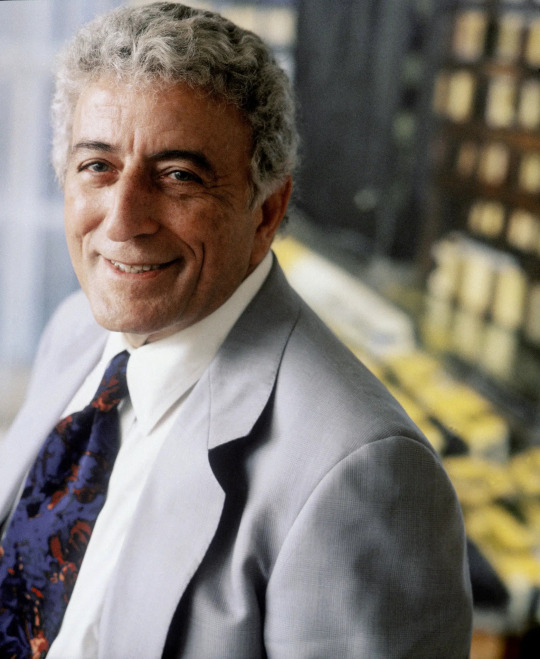
He recorded albums that honored musicians he admired — Duke Ellington, Louis Armstrong, Frank Sinatra and Billie Holiday — and he collaborated on standards with singers half, or less than half, his age. On the 2006 album “Duets: An American Classic,” he sang “If I Ruled the World” with Ms. Dion, “Smile” with Barbra Streisand and “For Once in My Life” with Stevie Wonder, and revisited his first Columbia single, “Boulevard of Broken Dreams,” with Sting. Five years later, on “Duets II,” his collaborators included Aretha Franklin, Queen Latifah, Willie Nelson and Ms. Winehouse.
As the century changed, he was once again touring, giving up to 200 performances a year, and recording prolifically.
In 2007 Mr. Bennett married a third time, to his longtime companion, Susan Crow, a teacher four decades his junior whom he had met in the late 1980s. Together they started a foundation, Exploring the Arts, that supports arts education in schools, and financed the Frank Sinatra School of the Arts, a public high school in Queens.
Mr. Bennett had lived in the same Manhattan apartment, where he died, for most of his adult life, except for a few years in Los Angeles and London, Ms. Weiner, his publicist, said. He is survived by his wife; his sons, Danny and Dae; his daughters, Johanna and Antonia Bennett; and 9 grandchildren.
If there was a magical quality to Mr. Bennett’s life, as suggested by David Evanier in a glowing 2011 biography, “All the Things You Are: The Life of Tony Bennett,” it is encapsulated by a story Mr. Bennett told to Whitney Balliett in 1974.
“I like the funny things in life that could only happen to me now,” he said. “Once, when I was singing Kurt Weill’s ‘Lost in the Stars’ in the Hollywood Bowl with Basie’s band and Buddy Rich on drums, a shooting star went falling through the sky right over my head and everyone was talking about it, and the next morning the phone rang and it was Ray Charles, who I’d never met, calling from New York. He said, ‘Hey, Tony, how’d you do that, man?’ and hung up.”
7 notes
·
View notes